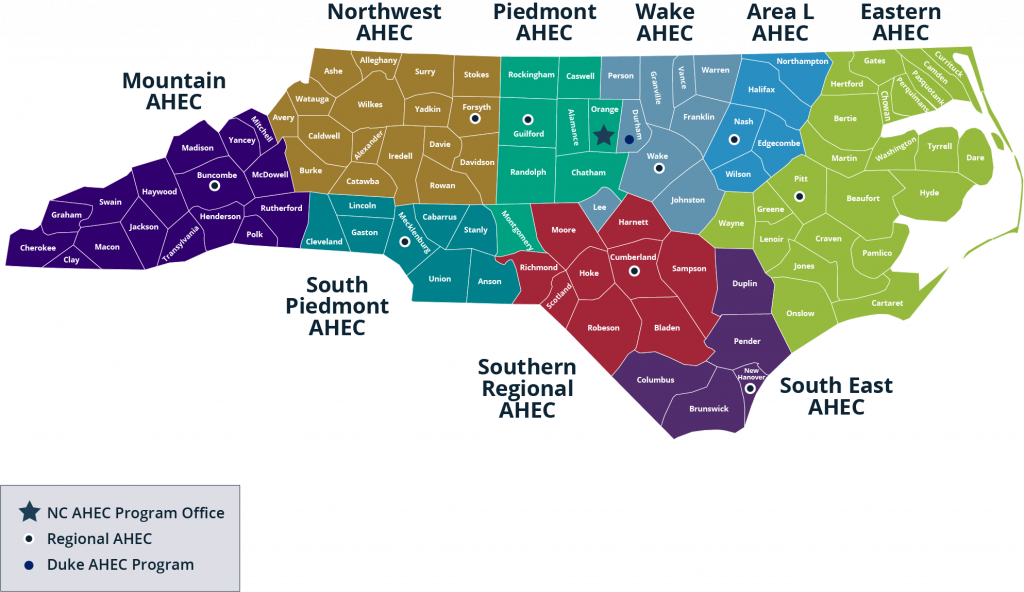We improve the distribution and retention of primary care physicians—and it all starts with graduate medical education support.
Supporting graduate medical education is at the core of NC AHEC’s mission to meet the state’s health and health workforce needs. We provide stipends to each of the teaching hospitals across the state, and we help support—and in rural and underserved areas of the state, operate—the residency programs necessary for primary and community care, such as family medicine, pediatrics, internal medicine, general surgery, and obstetrics and gynecology.
We are drivers of graduate medical education reform and expansion.
We support graduate medical education by measuring and reporting outcomes and through support of the I3 Population Health Collaborative, a 12-year collaboration of primary care residencies across three states, driving transformation of residency clinical practices and education. Over the past 28 years, North Carolina’s 75 non-metropolitan counties have shown greater improvement in their physician/population ratios than the comparable, non-metropolitan counties in the rest of the United States.
We train the next generation of providers in our community-based residency programs.
NC AHEC provides stipends to university hospitals and supports community residency programs in general surgery, family medicine, internal medicine, obstetrics and gynecology, pediatrics, and psychiatry. AHEC residents are more likely to stay in North Carolina than non-AHEC residents, helping to reverse the trend toward shortages and the uneven distribution of primary care physicians in the state’s rural areas.
GME is at the heart of what we do at NC AHEC, going all the way back to the beginning, in 1974, when the NC General Assembly approved and funded a plan by the UNC Chapel Hill School of Medicine to create a statewide network of nine AHEC regions.
The plan called for the establishment of 300 new primary care medical residency positions and the regular rotation of students to off-campus sites. Since 1974, 673 of these positions were actually created in North Carolina—NC AHEC directly supports 339 of these. Of these 339, 220 are in family medicine. Four new family practice residency programs have been developed in underserved and rural areas of the state with NC AHEC support.
Encouraging Innovation
As part of our vision to lead the transformation of health care education and services in North Carolina, we have always encouraged innovation in residency training. NC AHEC is part of the I3 Population Health Collaborative, a learning collaborative of 27 academic primary care programs in North Carolina, South Carolina, and Virginia, whose goal is to create momentum for widespread ambulatory practice excellence. The I3 Population Health Collaborative focuses on improving patient experience; increasing access, quality, and cost effectiveness of care in populations taken care of by primary care residency practices; and training primary care residents in advanced models of primary care. The collaborative has given more than 100 national presentations and has released 30 publications; this work has driven many aspects of what NC AHEC is doing with other in-state collaborations.
A Research-informed Approach
NC AHEC also collaborates with and provides ongoing financial support to the North Carolina Health Professions Data System (HPDS), which collects and disseminates descriptive data on selected licensed health professionals in North Carolina. The HPDS is maintained by the Program on Health Workforce Research and Policy at the Cecil G. Sheps Center for Health Services Research at the University of North Carolina at Chapel Hill, in collaboration with NC AHEC and the state’s independent health professional licensing boards. Without the data collected by the Sheps Center, NC AHEC—and other institutions and organizations—would not be as equipped to improve the state’s physician/population ratios, and the distribution of clinicians to rural and underserved communities.







